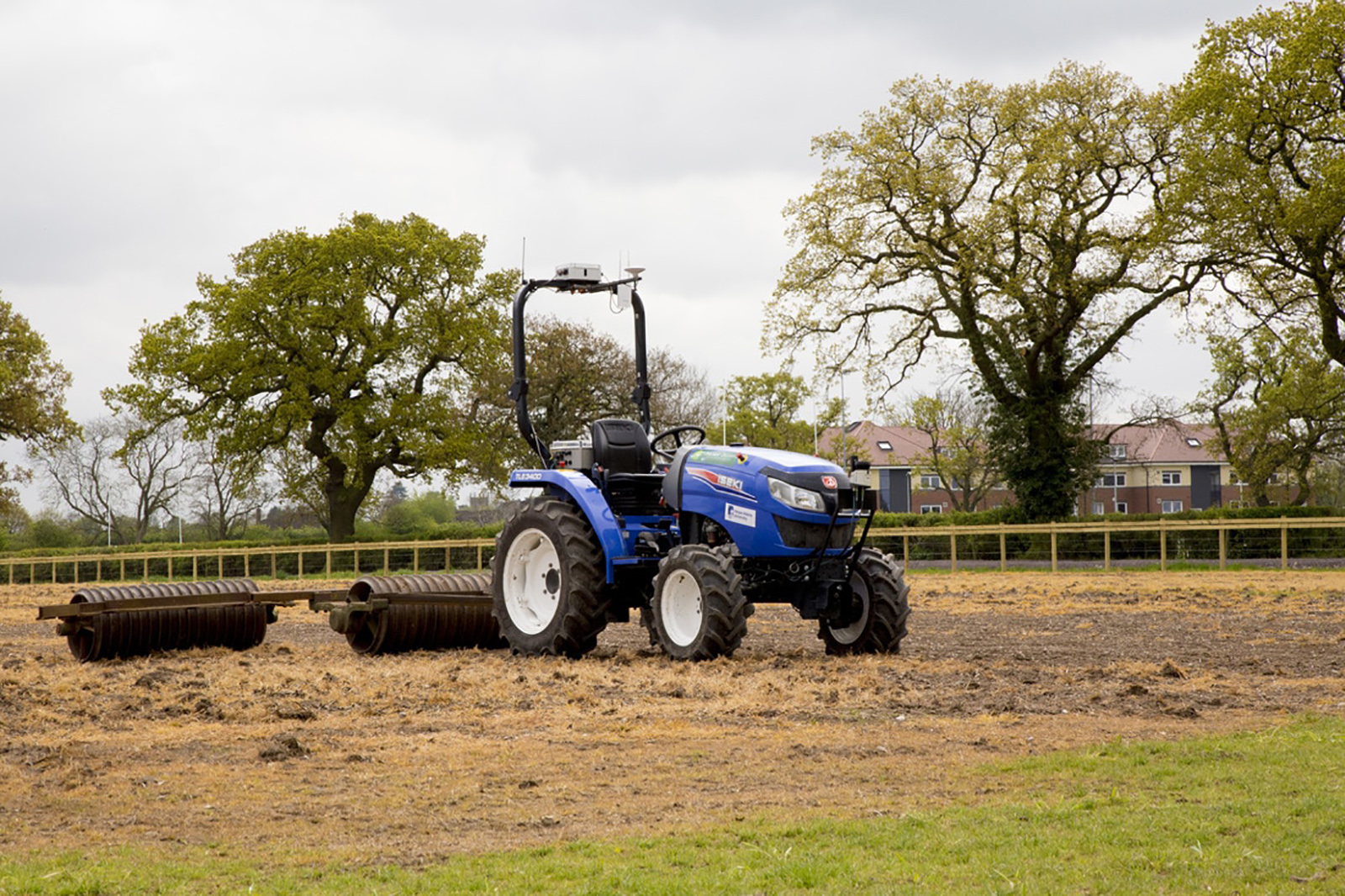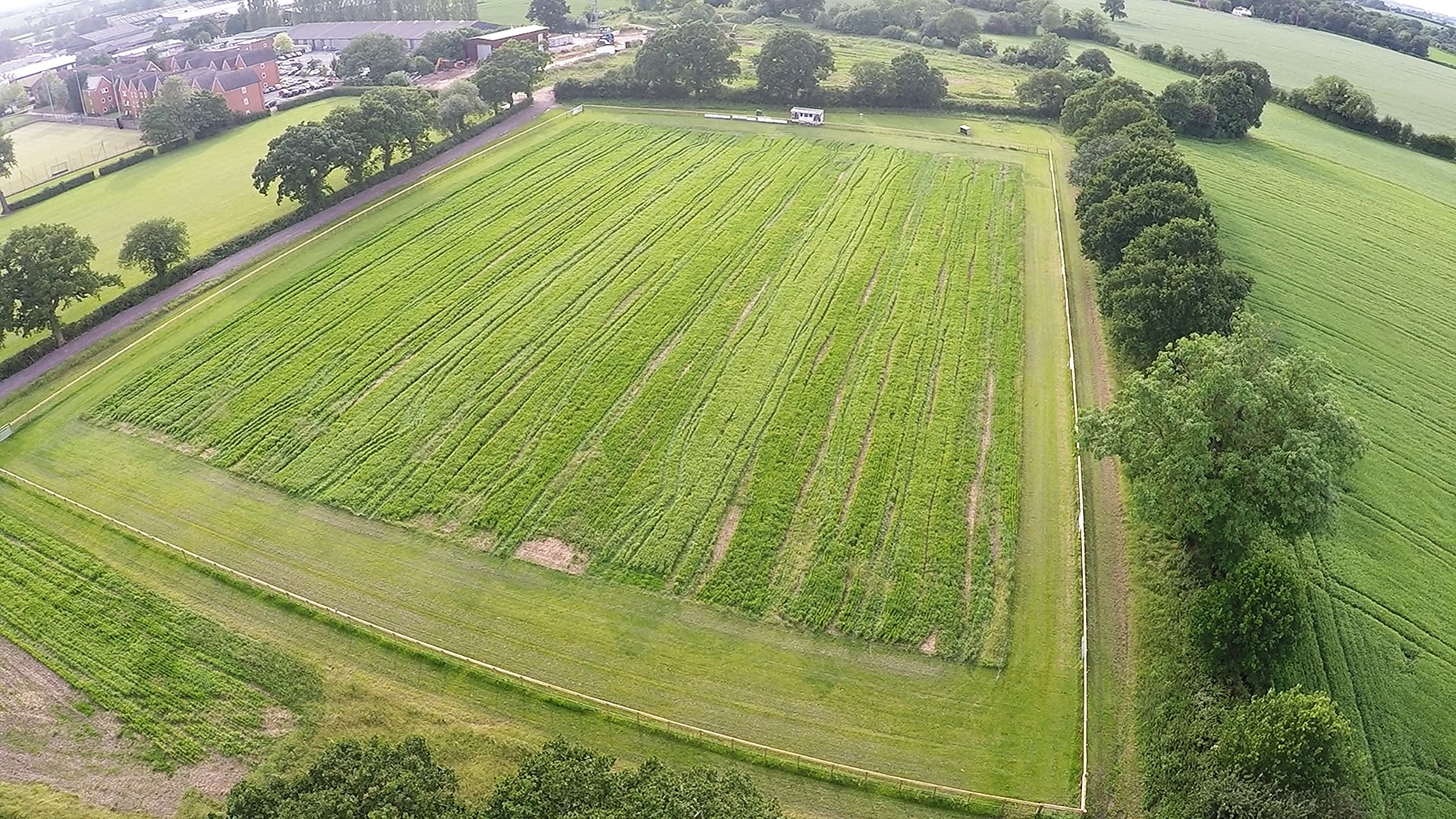Robotics agronomists from the UK raised and harvested the entire crop using automation

A group of scientists and students from Adams University (Shropshire, UK) in October last year decided to use the latest achievements of robotics in agriculture. Of course, even without them, there are plenty of solutions to automate the cultivation of plants and raising animals. But the researchers wanted to try to completely exclude human participation in the field work. The remote operator only observes what is happening and from time to time introduces certain adjustments into the system, if necessary.
The project would have been impossible without the support of the state, which provided £ 200,000 (over $ 260,000). Using these tools, scientists and engineers have equipped the tractor and combine cameras, laser sensors and GPS sensors. In addition, they used different kinds of drones and robot intelligence. These systems monitored the work of agricultural machinery and sent their “brothers” exactly where they were needed.
By the way, the area of the field, on which the work was carried out with the help of modified equipment, amounted to only one hectare. But this is only the first stage of the project. Scientists needed to make sure that everything was going according to plan, so the size of the site was chosen so that the equipment could be easily controlled. In the future, the project can be scaled and start work on a much larger piece of land.
')
The researchers decided to use small-scale agricultural equipment in their project. According to the project manager Keith Franklin, now farmers are working with huge devices that are very effective. But this efficiency has a downside. The fact is that such large and heavy mechanisms cause damage to the soil in the fields and everything that grows there. At first, this is imperceptible, but over time, agricultural work with the participation of these giants leads to soil degradation and, accordingly, crops begin to produce much less yield than before.
The project itself provides for a full cycle of agricultural work without human intervention. It is not only about harvesting, but also about tillage, planting, caring for them and getting the harvest as a result of all these works.
Despite the fact that the project was recognized as successful, it was not without its problems. For example, at the very beginning of work, in spring, the tractor could not independently keep a straight line when sowing plants. The rows were not very even, but not terribly crooked, so that in general the result can be considered acceptable. In addition, when using the tractor to spray the field with herbicides and fungicides as a vehicle for the entire system of nozzles, he did not have time to move around the field as it was intended, processing the crops evenly. Therefore, some areas were sprayed too intensively, and some remained completely untreated. As a result, the latter did not receive the required amount of fungicides and herbicides, which led to the appearance of plants and fungi that affect agricultural crops.
According to the operator, who monitored the movement of mechanisms, directing them to the right places on the field, it turned out to be more difficult to control the equipment, looking at the computer screen, than to perform the same operation while on the field.
The authors of the project are confident that in the future only robotic systems will be in the fields, with a few exceptions. Autopilots involve not only on the roads, but also in agriculture. And here it is more difficult to automate the processes of moving devices. On the highway and on the city road there are signs that a computer can understand, a marking. On the fields and primers there is nothing of the kind, but there are many obstacles waiting for the robot in its path. How to remove these obstacles and solve the problem of automatic cultivation of fields and work on farms is a matter that needs to be solved soon. The population of the planet is increasing, and the number of lands suitable for agriculture, on the contrary, is decreasing. Therefore, the only way to avoid hunger - getting more and more crop per unit area. And robots in this can help people.
So far, all this is too expensive a pleasure for an ordinary farmer to take advantage of this kind of technology. According to the developers, the harvest turned out to be one of the most expensive in the history of agriculture. But they are not worried about this, since the project is only a test, and as technology improves and processes are debugged, the cost of work will decrease, and quite significantly.

As for jobs that may be lost by people engaged in agriculture, the developers claim that there will be no special problems. Firstly, the process of replacing humans with robots is a matter of not one year, and perhaps not one decade. Secondly, people will not lose their jobs, but will only change their occupation. For example, instead of a tractor driver, there will be the profession of “managing agricultural robots” or “land reclamation analyst”.
Anyway, the processes of automation and robotization occur everywhere, so it is hardly worth resisting changes. But, since the changes are not proceeding at the fastest pace, you can adapt to them.
Source: https://habr.com/ru/post/370793/
All Articles